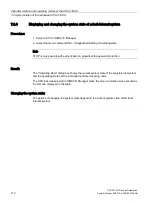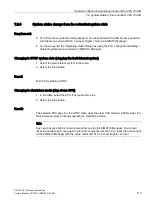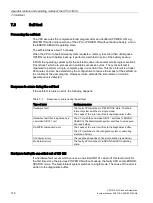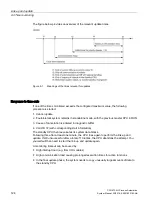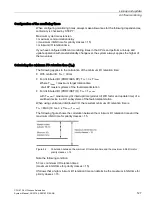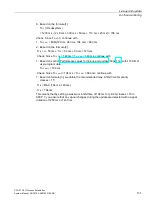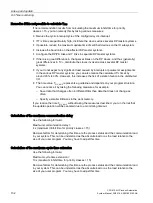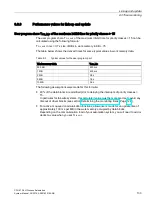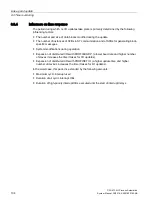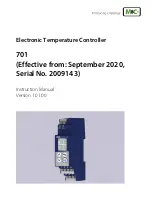
Link-up and update
8.3 Time monitoring
CPU 410-5H Process Automation
System Manual, 09/2014, A5E31622160-AB
123
8.3
Time monitoring
Program execution is interrupted for a certain time during updating. This section is relevant
to you if this period is critical in your process. If this is the case, configure one of the
monitoring times described below.
During updating, the fault-tolerant system monitors the cycle time extension, communication
delay and inhibit time for priority classes > 15 in order to ensure that their configured
maximum values are not exceeded, and that the configured minimum I/O retention time is
maintained.
You made allowances for the technological requirements in your configuration of monitoring
times.
The monitoring times are described in detail below.
●
Maximum cycle time extension
–
Cycle time extension: The time during the update in which neither OB 1 nor any other
OBs up to priority class 15 are executed. "Normal" cycle time monitoring is disabled
within this time span.
–
Max. cycle time extension: The maximum permissible cycle time extension configured
by the user.
●
Maximum communication delay
–
Communication delay: The time span during the update during which no
communication functions are processed. Note: The master CPU, however, maintains
all existing communication links.
–
Maximum communication delay: The maximum permissible communication delay
configured by the user.
●
Maximum inhibit time for priority classes > 15
–
Inhibit time for priority classes > 15: The time span during an update during which no
OBs (and thus no user program) are executed nor any I/O updates are implemented.
–
Maximum inhibit time for priority classes > 15: The maximum permissible inhibit time
for priority classes > 15 configured by the user.
●
Minimum I/O retention time:
This represents the interval between copying of the outputs from the master CPU to the
standby CPU, and the time of the master/standby changeover (time at which the previous
master CPU goes into STOP and the new master CPU goes into RUN). Both CPUs
control the outputs within this period, in order to prevent the I/O from going down when
the system performs an update with master/standby changeover.
The minimum I/O retention time is of particular importance when updating with
master/standby changeover.
The monitoring start times are indicated in the highlighted boxes in Figure 12-2. These times
expire when the system enters the redundant system mode or when there is a
master/standby changeover, i.e. on the transition of the new master to RUN when the update
is completed.


